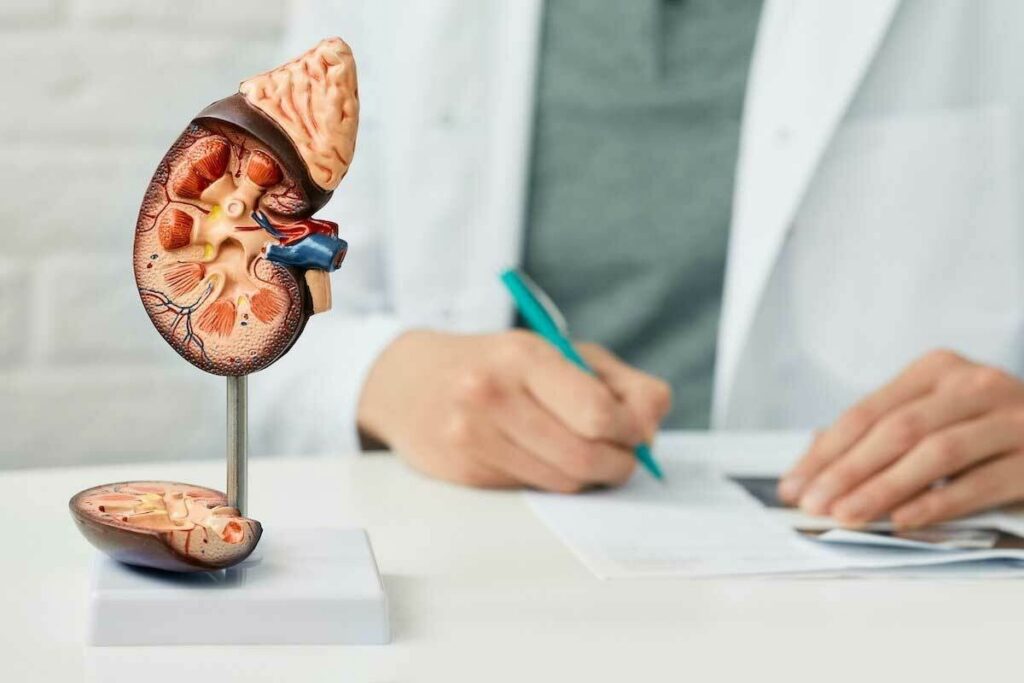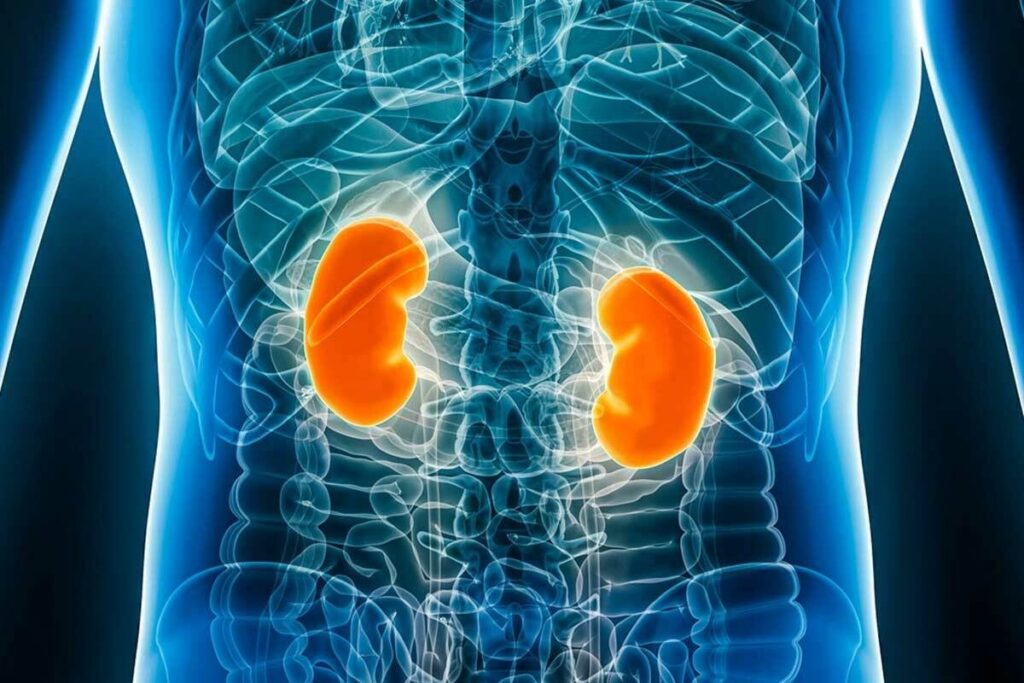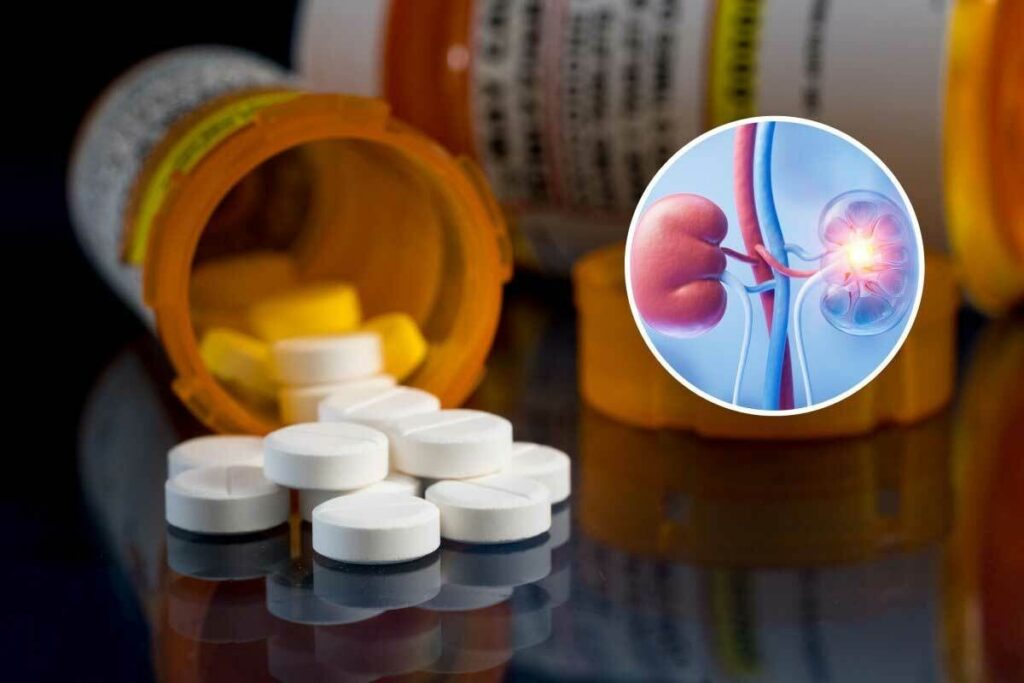
At Liv Hospital, we use top-notch nuclear medicine technology for detailed checks. An nm kidney scan is a special nuclear medicine test that looks at kidney function and blood flow. This renal scan uses a small amount of radioactive material to provide essential information about how well the kidneys are working, detect any blockages, and assess kidney health in ways other imaging methods may not.
A tiny bit of radioactive stuff is put into a vein. Then, a special camera takes pictures of the kidneys. Our team uses these images to check how well the kidneys are working and spot any problems.

The nuclear kidney scan is a detailed test that checks how well the kidneys work. It’s a non-invasive test that gives doctors important info. This helps them find and treat kidney problems.
Nuclear medicine kidney scans, or renal scans, use a tiny bit of radioactive material. This material helps doctors see the kidneys and how they work. The scan uses a special camera to take pictures of the kidneys.
To do the scan, a tiny amount of the radioactive material is injected into a vein. The kidneys take it in, and then it’s either passed out in urine or stays in the kidneys. A camera picks up the radiation, showing how the kidneys are working.
Key aspects of NM kidney scans include:
Nuclear medicine imaging, like NM kidney scans, uses tiny amounts of radioactive tracers. These tracers help diagnose and treat many diseases. This includes cancers, heart disease, and more.
For kidney scans, the tracer goes to the kidneys. This lets doctors see how well they’re working. The camera takes pictures from different angles, showing the kidneys’ structure and function.
Nuclear medicine scans, like the NM kidney scan, are very useful. They show how kidneys work, not just what they look like. This makes them key for diagnosing and treating kidney diseases.

Nuclear medicine kidney scans use special substances and cameras to see how the kidneys work. These scans, or renal scintigraphy, mix certain medicines with advanced tech. They help check kidney health and find problems.
Radiotracers are special substances that give off radiation. This radiation is caught by a camera. For kidney scans, these substances go through the kidneys. This lets doctors see how well the kidneys are working.
Doctors pick the right radiotracer based on what they need to know. For example, they might want to see blood flow or how well the kidneys filter waste.
Some common radiotracers include:
The gamma camera is key for kidney scans. It picks up the radiation from the radiotracers. Then, it turns this into images of the kidneys.
Gamma camera tech has a few important features:
By using the right radiotracers and gamma camera tech, kidney scans are a powerful tool. They help doctors see how the kidneys are working and find any issues.
NM kidney scans come in different types, each designed for specific needs. They are key in checking how well the kidneys work and stay healthy.
We use many NM kidney scans to fully understand kidney health. Each scan gives us special insights into kidney function.
Renal perfusion scans check the blood flow to the kidneys. They help find problems like stenosis or blockages in the renal arteries.
Renal function scans see how well the kidneys filter waste and extra fluids. These scans show how well the kidneys work and spot areas of low function.
Diuretic renal scans use a diuretic to make more urine. This test is great for finding blockages by seeing how the kidneys handle more urine.
Knowing about the different NM kidney scans helps us see their value. They give us important info on kidney health.
NM kidney scans have many uses in checking kidney health. They help us see how well kidneys work, find blockages, and check if a kidney transplant is working. This tool is key in understanding kidney health.
NM kidney scans are key for checking kidney function. They use special tracers to measure how well the kidneys filter waste. This helps us spot and manage kidney diseases.
They also show how each kidney works differently. This is helpful for those with kidney problems or damage.
NM kidney scans are great for finding blockages in the urinary tract. They track how a tracer moves to spot where it gets stuck.
This is very useful for finding problems like ureteropelvic junction obstruction (UPJO). Finding these issues early can stop more damage and help with treatment.
For those with kidney transplants, NM scans are very important. They check how well the new kidney is working and if there are any problems. This helps catch issues like rejection or blood flow problems early.
Using NM scans regularly helps keep the transplant working well over time.
Knowing what happens during an NM kidney scan can make you feel less anxious. We’ll explain everything from start to finish, including what to do before and after the scan.
Before your NM kidney scan, you’ll need to follow some steps. You might need to drink lots of water to help your kidneys work well during the scan. You might also be asked to come with a full bladder or drink a lot of fluids beforehand.
Tell your doctor about any medicines you’re taking or allergies, like to contrast agents or radioactive tracers. For more info, check out trusted medical sources.
When it’s time for the scan, you’ll lie down on a table. A small amount of radioactive tracer will be given to you through an IV. The gamma camera will then take pictures of your kidneys as the tracer moves through your body.
The scan happens in a quiet and comfy place. This helps get clear images without any movement.
After the scan, you’ll need to drink lots of fluids. This helps get rid of the radioactive material from your body. You’ll be told to go to the bathroom often to help with this.
The radioactive material will leave your body in a few hours. Our team will give you specific instructions to make sure you’re comfortable and safe.
Understanding the NM kidney scan process can make you feel more ready and calm. If you have any worries or questions, always talk to your doctor.
We want to make sure you know what to expect during your NM kidney scan. We’ll go over what happens on the day of the test. Knowing what to expect can help you feel more at ease and ready for the procedure.
The NM kidney scan usually takes 1 to 3 hours. You’ll lie on a scanning table, which might be hard and cold. It’s a good idea to bring someone with you for support.
You can bring a blanket or wear a gown for comfort. It’s important to stay very quiet during the scan. This helps get clear images. Our team will help you know when to stay quiet or move.
You might feel a pinch or coolness from the radiotracer injection. The table might be hard, and it could be cold. But most people find it okay, and we’re here to make you comfortable.
You might need to drink water or get a diuretic to check your kidney function. Our team will watch over you and answer any questions you have.
Knowing what to expect can help you feel more ready for your NM kidney scan. If you have any worries or questions, please let us know. We want to make sure you have a comfortable and successful test.
Understanding NM kidney scan results is key to checking how well our kidneys work. These results help doctors see if there are any problems with our kidneys.
NM kidney scan results can show if our kidneys are working properly or not. Normal findings mean our kidneys are doing their job well. But, abnormal findings might mean there’s a problem like not enough kidney function or blockages.
When results show something’s off, it could mean our kidneys aren’t working as they should. This could be because of disease, injury, or blockages. Doctors use these results to figure out what’s wrong and how to fix it.
NM kidney scans give us numbers that show how well our kidneys are working. They look at things like the glomerular filtration rate (GFR) and how each kidney is doing. These numbers help doctors see how healthy our kidneys are.
Doctors use these numbers to keep an eye on how our kidneys are doing over time. They check if treatments are working and make smart choices for our care.
NM kidney scans offer a unique mix of functional and structural info. They are key in checking renal health. They stand out in certain clinical situations compared to other imaging methods.
NM kidney scans have clear benefits over CT and MRI. They are great for checking how well the kidneys work. They give both detailed and exact information about kidney function.
One big plus of NM kidney scans is that they can check kidney function without using harmful contrast agents. This is good for patients with allergies or kidney problems.
Key differences between NM kidney scans and other imaging methods:
| Imaging Modality | Renal Function Assessment | Contrast Agent Use |
| NM Kidney Scans | Direct assessment of renal function | Minimal to no use of contrast agents |
| CT Scans | Limited functional assessment | Requires contrast agents |
| MRI | Functional assessment is possible with certain techniques | Often requires contrast agents |
For those allergic to contrast agents in CT and MRI, NM kidney scans are a safe choice. This is great for patients needing many scans or who’ve had allergic reactions before.
NM kidney scans use radiotracers that are usually safe. This makes them a top pick for patients with contrast allergies. It helps avoid bad reactions.
We suggest NM kidney scans for those needing detailed kidney function checks without contrast risks. It’s a safe way to fully assess kidney health.
It’s important to know the risks and safety tips for NM Kidney Scans. These scans are useful for checking the kidneys but come with some risks. Patients need to be aware of these.
One big worry is radiation from NM Kidney Scans. They use tiny amounts of radioactive materials to see the kidneys. Even though the risk is low, it’s good to know it’s there.
The scan’s radiation is about 1-5 millisieverts (mSv). For comparison, a chest X-ray is about 0.1 mSv. So, an NM Kidney Scan’s radiation is like a few years of natural background radiation.
Some people might face higher risks with NM Kidney Scans. Pregnant and breastfeeding women should avoid them because the radioactive material can reach the baby. Also, those with severe kidney disease or allergies to the radiotracer might need special care or other tests.
| Patient Group | Precautions |
| Pregnant Women | Avoid NM Kidney Scans unless necessary; discuss risks with your doctor. |
| Breastfeeding Women | May need to temporarily stop breastfeeding; consult your doctor for guidance. |
| Patients with Kidney Disease | Inform your doctor about your condition; alternative tests may be recommended. |
Knowing these risks and taking the right precautions helps patients safely get the most from NM Kidney Scans. This way, they can get the needed information for their health.
When it comes to NM Kidney Scans, different patient groups need special care. This is true for kids, older adults, and those with kidney disease. Each group has unique needs that we must consider and adapt our tests for.
Kids getting NM Kidney Scans need extra attention because of their size and growing bodies. We carefully choose the right amount of medicine to keep radiation low while getting clear images. Experts say it’s important to balance getting good images with keeping kids safe from too much radiation.
“The use of nuclear medicine in pediatric patients demands a careful balance between diagnostic efficacy and radiation safety,” says an expert
Making sure kids are comfortable and cooperative is also key. We use special techniques to help them relax and make the test easier.
Older adults might have health issues and kidneys that don’t work as well. We look at their overall health and any medicines they take, like diuretics. It’s important to carefully check how well their kidneys are working, as age can affect kidney function.
People with kidney disease can get a lot from NM Kidney Scans. These scans help us see how well their kidneys are working and if there are blockages. We’re careful with those who have very bad kidney problems, as some medicines might need to be adjusted.
Medical studies show that NM Kidney Scans are great for checking kidney function in patients with kidney disease. They’re safe because they don’t use harmful contrast agents. This makes them a valuable tool for diagnosing kidney issues.
In short, giving NM Kidney Scans to different patients needs a careful and tailored approach. By doing this, we make sure our tests are safe and effective for everyone.
Hybrid imaging and new radiopharmaceuticals are changing how we use NM kidney scans. These scans are key for checking how well the kidneys work and their structure. New tech is making them even better at diagnosing.
Hybrid imaging mixes different imaging types for better results. For NM kidney scans, it combine Nuclear Medicine with CT or MRI. This gives detailed info on both function and structure.
One big plus is getting both function and anatomy in one go. For example, NM/CT scans show where kidney problems are and how well they work.
Radiopharmaceuticals are used in NM scans to see and check organ function, like the kidneys. Newer ones are more targeted and work better for kidney imaging.
These new agents are more accurate and specific. They also last longer, so patients don’t need as many scans. This makes things more comfortable for them.
Comparison of Old and New Radiopharmaceuticals
| Characteristics | Older Radiopharmaceuticals | Newer Radiopharmaceuticals |
| Specificity for Renal Tissue | Lower | Higher |
| Half-life | Shorter | Longer |
| Diagnostic Accuracy | Lower | Higher |
| Patient Comfort | Less Comfortable | More Comfortable |
These updates in NM kidney scan tech are helping us better diagnose and treat kidney issues. As tech keeps getting better, we’ll see even more progress in patient care and accuracy.
NM kidney scans are key in checking how well our kidneys work. They look at how urine moves from the kidneys. We’ve seen how these scans work, their uses, and their benefits.
These scans are important because they help us understand kidney function. They can spot blockages and check on kidney transplants. Thanks to radiotracers and gamma cameras, we get a full picture of kidney health.
In short, NM kidney scans are a must for checking kidney health. They help us make better choices for patient care. As nuclear medicine gets better, NM kidney scans will keep being a big part of top-notch healthcare.
An NM kidney scan is a test that checks how well your kidneys work. It uses tiny amounts of radioactive material to do this.
First, a small amount of radioactive material is injected into a vein. This material goes to your kidneys. Then, a special camera picks up the radiation, making images of your kidneys.
There are several types of NM kidney scans. These include scans for kidney blood flow, function, and how well they work after a transplant. Each scan gives different information about your kidneys.
The time it takes for an NM kidney scan varies. It can be anywhere from 30 minutes to several hours. This depends on the type of scan and your condition.
Most people find an NM kidney scan painless. Some might feel a little discomfort when the radiotracer is injected or during the scan.
NM kidney scans are great because they can check how well your kidneys work and find blockages. They’re also safe for people with allergies to contrast dyes.
The risks of an NM kidney scan are low. You will get a small amount of radiation. But the benefits of the scan are usually worth it, and steps are taken to keep radiation low.
To prepare, arrive at the imaging center on time. You might need to drink water or other fluids. Also, remove any jewelry or items that could get in the way of the scan.
If you’re pregnant or breastfeeding, talk to your doctor first. The radiation from the scan could be harmful to your baby.
A healthcare provider looks at the scan results. They check the images and data to see how your kidneys are doing. They can spot any problems or issues.
Renal scintigraphy is another name for an NM kidney scan. It’s a test that uses radioactive material to check your kidney function and structure.
A renal exam, or kidney scan, is a test that checks your kidneys. It uses imaging, like nuclear medicine, to do this.
Subscribe to our e-newsletter to stay informed about the latest innovations in the world of health and exclusive offers!
WhatsApp us